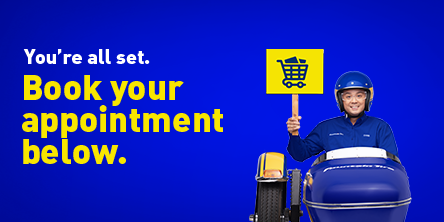Healthy tire tread isn't just for snow.
Are your tires rain-ready?
Rain and worn tires don't mix. Hear from Jason and Kate about the rainy day they got serious about their tires.
Learning from each other is one more way we're on this road together.
When Jason lost control, the rain took the wheel
"I grew up in a place where it's icy seven months of the year, and now I live in Vancouver where it rains all the time. I never gave rain much thought until I was coming off a wet ramp and just started spinning. I did a full 360 and luckily there was nobody behind me or beside me. After that I was no longer confident driving in the rain on those tires. Now I drive on tires that give me confidence in any weather. You never know what can happen." - Jason, Vancouver
When Kate hit the brakes the rain let it slide
"I like to think of myself as a safe and aware driver, but that didn't matter when I was heading to work one morning. It had rained really bad the night before. The light at the intersection was green. As I approached it turned red. I pressed the brake and my car just locked up. I slid through the intersection and smashed into a bus. Thankfully no one was hurt. It didn't matter that I was a safe driver because in that moment my worn out tires didn’t do what I needed them to do." - Kate, Vancouver
Safe driving tips for the rain
Keep your distance
Since braking distances can be longer on wet roads, leave at least 4 seconds distance between you and the driver ahead. Staying back will also take you away from the tire spray of the vehicle in front of you, giving you better visibility.
Keep your tires rain-ready
Your tires should have enough tread depth to remove water from between the tire and the road surface effectively. If your current tires are worn down to anywhere near the wear bars (3/32nds or 4/32nds of an inch), it's time to think about replacing your tires.
In rainy conditions, tire pressure is even more important. Tire pressures that are too low or too high can lead to reduced traction, premature tread wear, or tire failure.
{{showWheelsRims ? 'SEASONAL TIRE CHANGE' : 'NEW TIRE INSTALLATION'}}

Are your tires on wheels/rims? *
Required FieldWill you be storing your tires with us? *
Required FieldAre your tires already stored at the {{branch.branchName}} store? *
Required FieldAdditional Comment

SLOW LEAK AND/OR FLAT REPAIR

Which tire is losing air or flat?
 Front
Front




{{getSelectedTires()}}
Booking In Process

You currently have an appointment booking in process. If you make changes to your cart now your booking will be cancelled.
Booking Cart Cleared
As our products and servicess vary by store, we have cleared your booking cart. Please re-select the items for your appointment.
You need to select a store in order to obtain an accurate quote
Oops!
Something happened, please try again..No Locations Found
Please try your search again.
{{location.branchName}}
{{location.address}} {{location.city}}, {{location.province}}, {{location.postalCode}}
(Mobile Truck)
Thank you for requesting a quote.
{{branch.fullAddress}}
You need to select a store in order to obtain an accurate quote
Oops!
Something happened, please try again..No Locations Found
Please try your search again.
{{location.branchName}}
{{location.address}} {{location.city}}, {{location.province}}, {{location.postalCode}}
(Mobile Truck)
Thank you for requesting a quote.
{{branch.fullAddress}}
A set of tires is currently in your cart. Would you like to replace it?



A set of wheels is currently in your cart. Would you like to replace it?

Please Confirm Your Vehicle Details
Vehicle and Product Mismatch

The tires selected {{validationResult.tireSize}} do not match the manufacturer’s recommendation.
You can contact the store if you are unsure if the selected tire size is the right fit for your vehicle.
The wheels selected, {{validationResult.wheelSize}}, does not match per the vehicle manufacturer recommendation.
Putting on incorrect wheel size can be a real safety hazard or result in damaging the vehicle. It is recommended to put on wheels that matches the vehicle manufacturer.
You can contact the store, if you are unsure if the selected wheel size is the right fit for your vehicle.
The tires selected, {{validationResult.tireSize}}, and wheels selected, {{validationResult.wheelSize}}, do not match per the vehicle manufacturer recommendation.
Putting on incorrect tire/wheel size can be a real safety hazard or result in damaging the vehicle. It is recommended to put on tires/wheels that matches the vehicle manufacturer.
You can contact the store, if you are unsure if the selected wheel size is the right fit for your vehicle.




